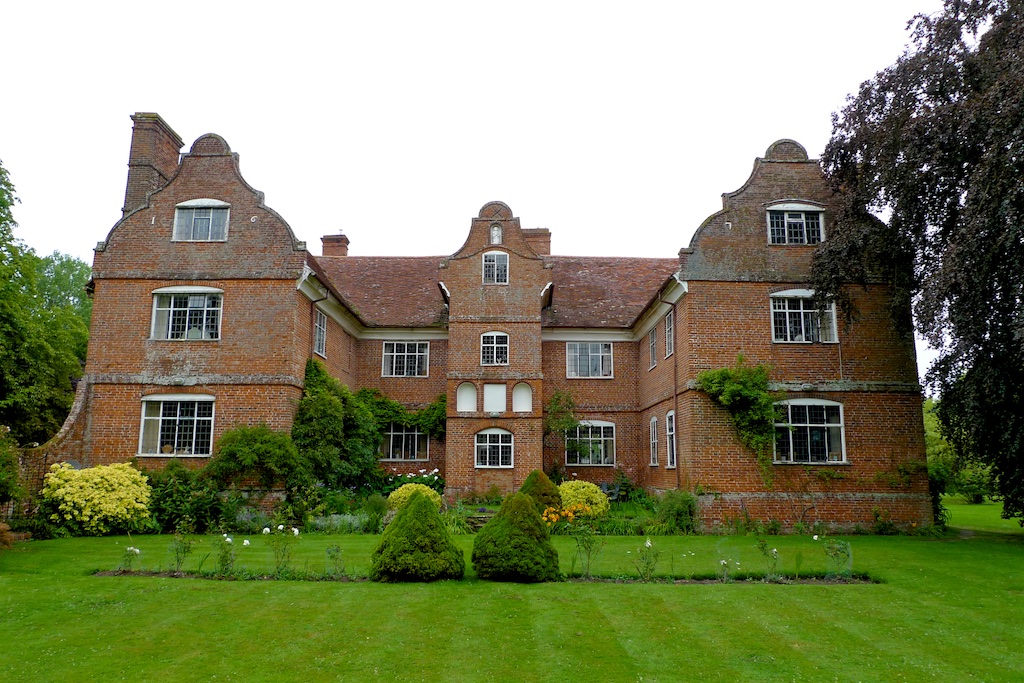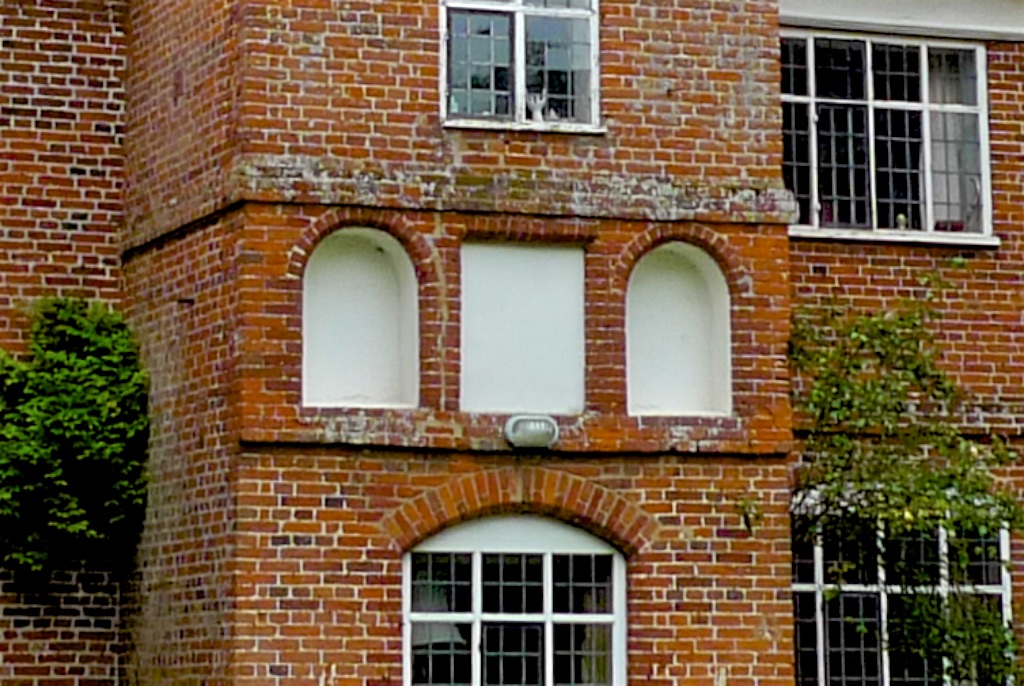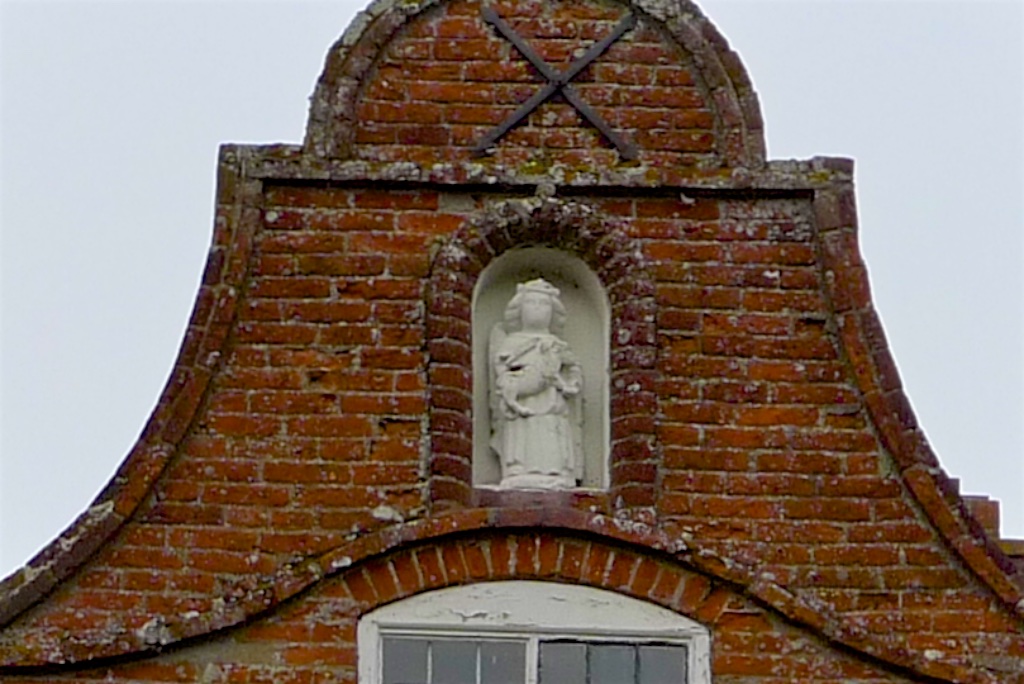Pictures of buildings mentioned in the second edition “Suffolk” volume of “The Buildings of England” series by Sir Nikolaus Pevsner.
Pevsner lists the Church, St Peter (ruin) and Red House Farmhouse.
Pevsner refers to two 15ft high remnants of the tower of St Peter’s of the parish of Buxlow but they are not obvious from the road and the path to the Church now appears to be a private road to two houses so I did not investigate further.
Pevsner (p319), Sandon (p268) and the Ordnance Survey map still refer to Red House Farmhouse but it is now called Buxlow Manor:
Pevsner refers to two 15ft high remnants of the tower of St Peter’s of the parish of Buxlow but they are not obvious from the road and the path to the Church now appears to be a private road to two houses so I did not investigate further.
Pevsner (p319), Sandon (p268) and the Ordnance Survey map still refer to Red House Farmhouse but it is now called Buxlow Manor:

Pevsner says of it: “Dated 1678. Still on the Elizabethan E plan. The two projecting wings have Dutch gables with segmental pediments at the top. In the porch on the first floor two blank niches, in the gable a niche with a statue of St Agnes”.
Here is a closer view of the blank niches with a blank panel in between:
Here is a closer view of the blank niches with a blank panel in between:

and here is a closer view of the higher niche with a figure now believed to be a medieval (late 15th century) statue of an East Anglian angel:

Buxlow Manor has a web-site covering the house and even recipes. The owner provided much extra detail about the house to visitors through the Invitation to View scheme and about its origins as the manor house for the manor of Buxlow, for which there is good evidence. The origins of the site as a manor house go back to the 13th century. Coppinger in Manors of Suffolk, Vol 2, p32, notes that Buxlow was once a distinct Parish but was consolidated with Knodishall on 22nd Feb 1721. The house was once the farmhouse for Red House Farm (which still exists), hence its interim name as Red House Farmhouse.
Regarding the panel and angel the owner says “The statue in the niche in the top tier is not St Agnes. St Agnes is always depicted holding a lamb; a closer inspection of the statue shows that the creature she is holding has wings. We wrote to Country Life some years ago with a photograph of the statue asking if any reader could identify it. One reader wrote to say that in her opinion it was St Margaret of Scotland. Why she should appear in a niche in a manor house in Suffolk is obscure. More recent information about the statue comes from the historian Norman Scarfe, the V&A and Professor Diarmaid MacCulloch.
Professor MacCulloch sums up his view as follows:- “For what it’s worth, I think there is no doubt that the figure is a crowned angel, and that she is holding a ram, and that the object above is a pair of shears. The most likely explanation of this combination of things is that a rebus is involved, and that the rebus concerns the wool shears and may refer to a name, Shearer, Shear-man or Sherman, which was, apparently, a very common name in Suffolk in the 15th century.”
The owner continues: “the rectangular panel may have been intended for an inscription , but facing South West, as it does, suggests to me that it may have been intended for a sundial.
Regarding the panel and angel the owner says “The statue in the niche in the top tier is not St Agnes. St Agnes is always depicted holding a lamb; a closer inspection of the statue shows that the creature she is holding has wings. We wrote to Country Life some years ago with a photograph of the statue asking if any reader could identify it. One reader wrote to say that in her opinion it was St Margaret of Scotland. Why she should appear in a niche in a manor house in Suffolk is obscure. More recent information about the statue comes from the historian Norman Scarfe, the V&A and Professor Diarmaid MacCulloch.
Professor MacCulloch sums up his view as follows:- “For what it’s worth, I think there is no doubt that the figure is a crowned angel, and that she is holding a ram, and that the object above is a pair of shears. The most likely explanation of this combination of things is that a rebus is involved, and that the rebus concerns the wool shears and may refer to a name, Shearer, Shear-man or Sherman, which was, apparently, a very common name in Suffolk in the 15th century.”
The owner continues: “the rectangular panel may have been intended for an inscription , but facing South West, as it does, suggests to me that it may have been intended for a sundial.